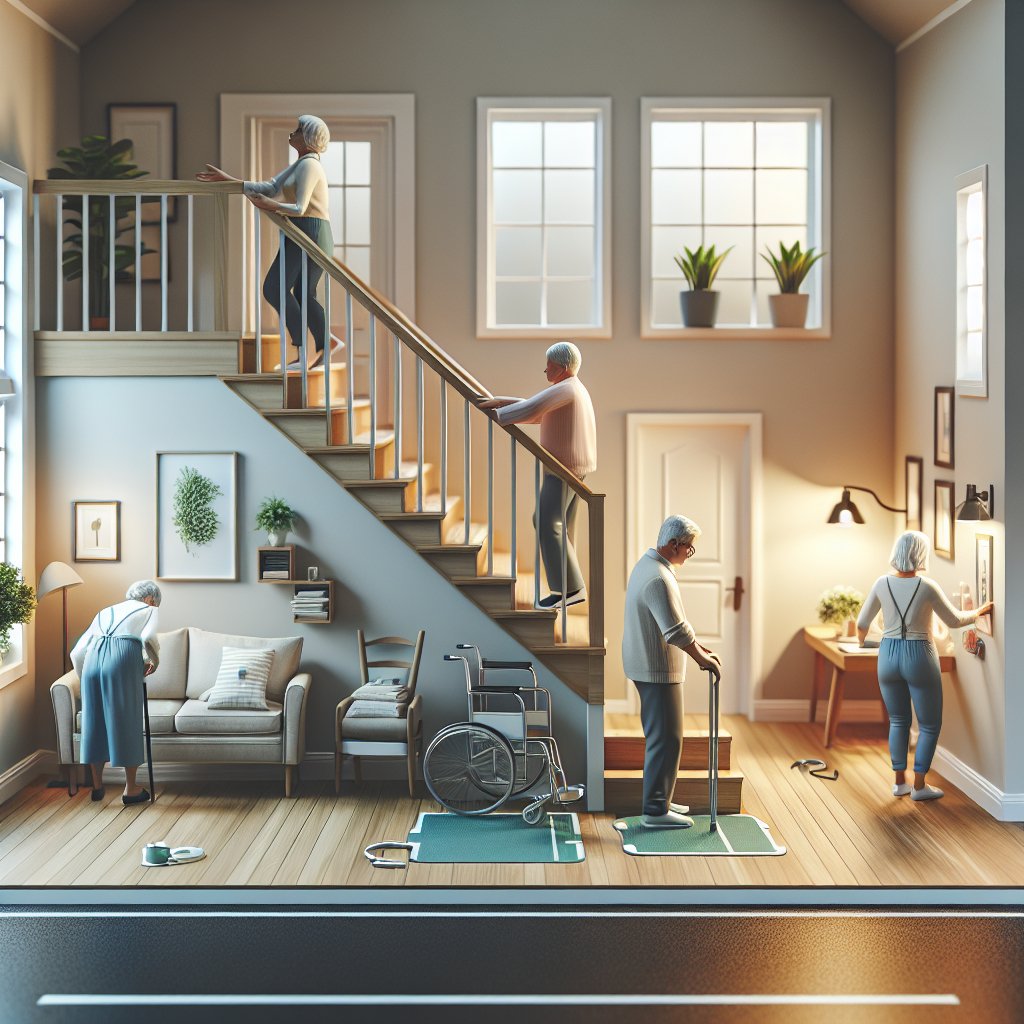Preventing home accidents for seniors is a crucial aspect of ensuring their safety and well-being. As individuals age, they may face various physical and cognitive challenges that increase their risk of accidents at home. By implementing specific strategies and modifications, caregivers and family members can create a safer living environment for seniors. This article will explore common hazards in the home, practical prevention tips, and the importance of regular assessments to maintain a safe space.
Understanding Common Hazards in the Home
To effectively prevent accidents, it is essential to understand the common hazards that seniors may encounter in their homes. These hazards can range from physical obstacles to environmental factors that may pose risks. Below are some of the most prevalent dangers:
- Slips and Falls: One of the leading causes of injury among seniors, slips and falls can occur due to wet floors, uneven surfaces, or cluttered walkways.
- Fire Hazards: Seniors may be at risk of fire accidents due to cooking mishaps, faulty electrical appliances, or inadequate smoke detection systems.
- Medication Mismanagement: Confusion over medication schedules can lead to accidental overdoses or missed doses, posing significant health risks.
- Bathroom Dangers: The bathroom is a common site for accidents, with wet floors and the potential for falls while getting in and out of the shower or bathtub.
- Inadequate Lighting: Poor lighting can make it difficult for seniors to navigate their homes safely, increasing the risk of trips and falls.
Practical Prevention Tips
Once the common hazards have been identified, the next step is to implement practical prevention strategies. Here are several effective measures that can be taken to enhance safety for seniors at home:
1. Modify the Living Environment
Making simple modifications to the home can significantly reduce the risk of accidents. Consider the following changes:
- Remove Clutter: Keep walkways clear of obstacles such as shoes, bags, and other items that could cause tripping.
- Install Handrails: Place handrails on both sides of staircases and in bathrooms to provide support and stability.
- Use Non-Slip Mats: Place non-slip mats in the bathroom and kitchen to prevent slips on wet surfaces.
- Improve Lighting: Ensure that all areas of the home are well-lit, especially staircases and hallways. Consider using night lights in bedrooms and bathrooms.
2. Enhance Bathroom Safety
The bathroom can be particularly hazardous for seniors. To improve safety in this area:
- Install Grab Bars: Place grab bars near the toilet and in the shower or bathtub to provide support.
- Use a Shower Chair: A shower chair can help seniors bathe safely without the risk of falling.
- Consider a Walk-In Tub: If possible, install a walk-in tub to reduce the risk of slips and falls while bathing.
3. Fire Safety Measures
To prevent fire-related accidents, it is essential to take proactive steps:
- Install Smoke Detectors: Ensure that smoke detectors are installed in every room and test them regularly to ensure they are functioning.
- Keep a Fire Extinguisher Handy: Place a fire extinguisher in the kitchen and ensure that seniors know how to use it.
- Establish a Fire Escape Plan: Create and practice a fire escape plan with seniors, ensuring they know how to exit the home safely in case of an emergency.
4. Medication Management
To prevent medication-related accidents, consider the following strategies:
- Use Pill Organizers: Pill organizers can help seniors keep track of their medications and ensure they take the correct doses at the right times.
- Set Reminders: Use alarms or smartphone apps to remind seniors when it is time to take their medications.
- Regularly Review Medications: Schedule regular check-ups with healthcare providers to review medications and make necessary adjustments.
5. Regular Assessments
Conducting regular assessments of the home environment is vital for maintaining safety. Here are some tips for effective assessments:
- Conduct Home Safety Audits: Regularly evaluate the home for potential hazards and make necessary adjustments.
- Involve Seniors in the Process: Encourage seniors to participate in safety assessments, as they may have insights into their specific needs and challenges.
- Seek Professional Help: Consider hiring a professional home safety consultant to conduct a thorough assessment and provide recommendations.
The Role of Family and Caregivers
Family members and caregivers play a crucial role in preventing home accidents for seniors. Their involvement can make a significant difference in creating a safe living environment. Here are some ways they can contribute:
1. Communication and Education
Open communication is essential for understanding the needs and concerns of seniors. Family members and caregivers should:
- Discuss Safety Concerns: Regularly talk with seniors about their safety concerns and listen to their feedback.
- Educate on Safety Practices: Provide education on safe practices, such as proper lifting techniques and the importance of using assistive devices.
2. Providing Assistance
Offering assistance can help seniors navigate their daily activities safely. Family members and caregivers can:
- Help with Household Chores: Assist with tasks that may pose risks, such as cleaning, cooking, and grocery shopping.
- Accompany Seniors: Offer to accompany seniors during outings to ensure they remain safe and supported.
3. Monitoring and Support
Regular monitoring and support can help identify potential hazards and provide reassurance. Family members and caregivers should:
- Check-In Regularly: Make regular visits or phone calls to check on seniors and assess their well-being.
- Encourage Social Interaction: Promote social activities to reduce feelings of isolation, which can lead to accidents due to lack of attention or awareness.
Conclusion
Preventing home accidents for seniors is a multifaceted approach that requires awareness, proactive measures, and ongoing support. By understanding common hazards, implementing practical prevention strategies, and involving family members and caregivers, it is possible to create a safer living environment for seniors. Regular assessments and open communication are key components in maintaining safety and ensuring that seniors can live independently while minimizing the risk of accidents. Ultimately, fostering a safe home environment not only protects seniors but also enhances their quality of life, allowing them to enjoy their golden years with confidence and peace of mind.




